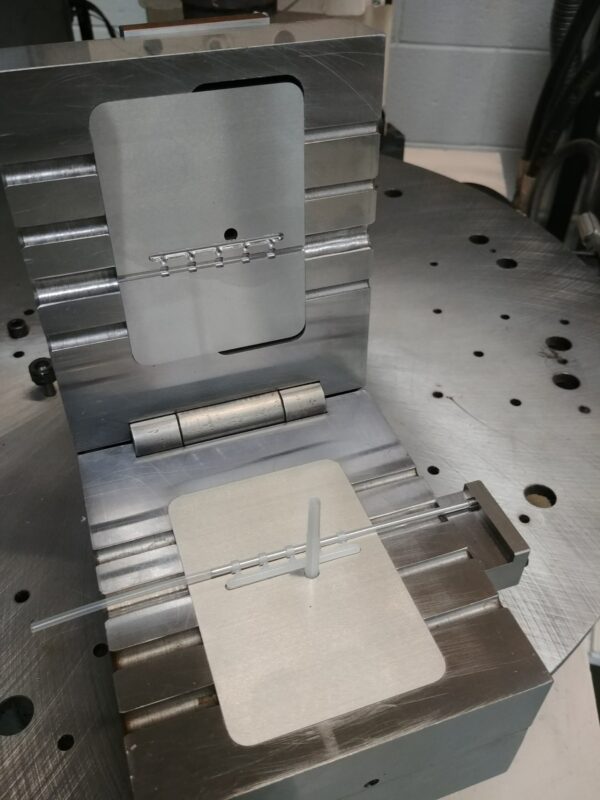
Medical Marker Bands
Many of today’s new and innovative healthcare devices are made from a combination of thermoplastic resin and specialty medical components like cannula, tubing, wires, cables, stampings and delicate sensors.
Advancements in molding technology have offered the ability to mold delicate components directly into the devices, rather than being incorporated later through machining, gluing, or ultrasonic welding.

With the Rise of AI, What IP Disputes in Healthcare Are Likely to Emerge?
Munck Wilson Mandala Partner Greg Howison shared his perspective on some of the legal ramifications around AI, IP, connected devices and the data they generate, in response to emailed questions.
Now, while this technology might not be brand new in and of itself, the process has been re-invented with the use of book molds.
The vast majority of vertical molding equipment on the market is configured with the top half of the mold attached to the upper platen of the molding machine. The top then closes down with force onto the bottom plate.
Traditionally, it is often difficult to hold delicate inserts in place during the injection molding process (even more so with horizontal molding machines). The possibility for delicate inserts to be interrupted or misplaced is greater than what manufacturing managers would like to admit.
The inserts loaded in the bottom half must be held securely in place so that, when the top closes, neither the mold nor the delicate insert is damaged. Damage to the mold can be substantial, especially when the two halves close under high tonnage around steel or other rigid materials, so it is important to locate and secure components in place carefully during molding. Still, factors such as operator misplacement or shuttle/rotary table vibration can mean damage to the mold or the inserts.
A solution that has helped eliminate these complications is using bookmolds mounted on a rotary table press. Bookmolds have become prevalent in the production of medical devices, specifically for medical injection molding.
Bookmolds are mounted to vertical clamp/vertical injection molding machines that have multi-station rotary tables. The molds consist of top and bottom mold halves that are connected with a hinge in the back so the top half can be lifted open.
The hinge is the lynchpin of the mold and ensures each opening and closing is exactly the same no matter what type of machine it is on.
Like conventional molds, bookmolds may have taper locks to maintain alignment between both halves and avoid shifting. A tapered sprue bushing is located on the top of the mold so that, when the mold is opened, the sprue and runner will remain in the bottom half.
Ejectors are installed in the bottom half to lift out finished parts along with the sprue and runner, so multiple cavities are often well suited for bookmolds. A handle is often mounted on the top half for easy opening, which can be done either manually by the press operator, or with a stationary ramp.
Medical manufacturing and the medtech industry are constantly pushing technology to new heights for fresh perspectives on healthcare devices. And it is manufacturing advancements like bookmolds that continues to help the medical device companies bring safe and innovative solutions to patients.
John Schmitz is the CEO and President of Aberdeen Technologies,a leading medical device manufacturer. Since being founded, John and his team of engineers have been providing plastic injection molding and mold tooling solutions to the largest medical device companies in the world. Located in Carol Stream, Il Aberdeen Technologies is proud to be a leading insert molding provider for over 25 years.














